Scientists Warned of a Salton Sea Disaster. No One Listened.
On the afternoon of Oct. 6, 2022, a massive dust storm rose in the drought-parched Sonoran Desert just southeast of California’s Salton Sea. Wind, gusting at more than 60 miles per hour, whipped the desert floor into a vaulting curtain of sediment that swept north across the Imperial Valley, engulfing low-slung agricultural towns like El Centro and Brawley in a mantle of suffocating dust. The storm knocked out power, downed trees, and shrouded the region in an eerie amber haze. The Environmental Protection Agency’s Air Quality Index, which considers scores above 150 unhealthy, and those above 300 hazardous, spiked to 659 at a monitoring station on the western shore of the Salton Sea. And as the avalanche of dust bore down, Trianna Morales, a 31-year-old baker at the local Vons supermarket in Brawley, looked on with dread. “Oh my God,” Morales thought. “We’re gonna get sick.”
Morales and their two children, 6-year-old Luna and 3-year-old Frederick, as well as Morales’ fiancé, Cyrus Ramirez, all suffer from severe asthma. Inhalers, nebulizers, and packages of various medications crowd the countertops of their apartment, while a homemade air purifier — built from a box fan and furnace filters — usually whirs away in the corner of the living room. These defenses, however, too often prove insufficient against the dust storms that now blow through the region with increasing frequency. During these events, there is little the family can do besides wait anxiously to see whose attack will be the gravest. This time, it was Luna’s.
The child began coughing soon after the storm arrived, and in the following days her symptoms worsened. When she started experiencing asthmatic retractions — a type of severely labored breathing that caused her chest to cave inward — Morales rushed her to the hospital. There, doctors administered steroids to open Luna’s airways. She soon recovered, and the family was allowed to return home. For Morales, the episode was frightening and demoralizing — but also depressingly familiar. It was Luna’s third or fourth visit to the ER for breathing issues in the last year alone. Frederick had also made several trips. “I just feel so bad for them,” said Morales. “They’re never going to get away from this.”




Morales attributes their family’s breathing problems to the Salton Sea, a strange and troubled body of water 17 miles by car to the north. The largest lake by surface area in California, the Salton Sea is a 316-square mile, exceedingly shallow glaze of water that stretches from the Imperial Valley in the south to the Coachella Valley in the north. The lake has been shrinking in recent years, the result of drought, reduced Colorado River inflows to the Imperial Valley, and a package of water transfer agreements (where parties buy and sell water rights) that depleted the Sea’s main source: agricultural runoff. As the shoreline recedes, it reveals swathes of formerly submerged lakebed, or playa, laced with heavy metals, agrochemicals, and potentially hazardous microbial byproducts. Toxic dust from the playa then blows into local communities, where scientists believe it is contributing to sky-high rates of respiratory disease. As even greater expanses of playa are exposed by the shrinking lake in coming years, those health impacts will likely become much worse.
“It’s one of the biggest crises in California right now,” said Emma Aronson, a microbiologist at the University of California Riverside. “And so many people don’t even know about it.”
For nearly a quarter of a century, scientists have warned the state of California that an ecological and public health catastrophe was imminent. But repeatedly, the state, which has assumed a statutory responsibility for the lake’s restoration since 2003, has failed to heed those warnings. It has instead approved water transfers known to be harmful to the region without implementing a long-term plan to mitigate their impacts. It has never enacted a comprehensive scientific program that many scientists believe is a critical first step toward developing a successful restoration strategy. And it has, after 20 years of neglecting the region, only recently begun to offer Band-Aid solutions that most scientists agree will do little to address the existing and impending problems — and even those projects have fallen far behind schedule.
State officials point to a complicated patchwork of land ownership and difficulties navigating regional water rights — as well as the sheer magnitude of the problem — as barriers to progress. However, Lisa Lien-Mager, a spokesperson for the California Natural Resources Agency, told Undark that she believes the state has turned a corner. “We recognize the slow progress over the decades,” she said. “But now we are really feeling hopeful that we’ve broken through some of those barriers.”
For many scientists, though, hope is not good enough. The state has run out of time, they say, and the shrinking lake has already begun to exacerbate the region’s poor respiratory health. A recent survey by researchers from the University of Southern California found that about half of elementary school kids in the region had either been diagnosed with asthma or had displayed asthma-like symptoms. In Imperial County, where Brawley is located, children visit ERs for respiratory issues at twice the rate of those in the rest of California. At least two children have died from asthma attacks in the last two decades.
For local residents like Morales and Ramirez, the crisis at the Salton Sea has become an inescapable fixture of daily life. “I wish they would just find a way to clean it up,” Ramirez said.
“When I think of the Salton Sea,” he added, “I just think of how much harm it’s doing to people.”
One morning in the late summer of 1996, Ken Sturm, then a biologist at the Salton Sea National Wildlife Refuge, was patrolling the lake’s shallow waters when he began to spot dead pelicans. Their carcasses jutted from the surface like half-submerged stones, dotting the shoreline. Other birds, still alive, writhed in the water, slowly succumbing to paralysis. Sturm raced back to alert his boss, and together they returned to the lake. By mid-afternoon it was clear that something unprecedented was occurring. “All over the Salton Sea, every shoreline we patrolled, we were finding dead and dying birds,” Sturm recalled.
“It was shocking,” he added.
What Sturm witnessed that day was the beginning of the deadliest pelican die-off ever recorded. In just a few months, 15 to 20 percent of the western population of American White Pelicans, as well as several other species, perished at the Salton Sea, some 15,000 birds in total. The cause was determined to be type C avian botulism, a bacterial neurotoxin. To dispose of the carcasses, Sturm and his colleagues ran an incinerator 24 hours a day, but still could not keep up; the birds accumulated in 6-foot-high piles, rotting in the August heat. At night, Sturm would brush the maggots out of his socks, sleep for a few hours, and then begin again, collecting and incinerating pelicans. The grisly scene received national attention, and everyone seemed to ask the same question: Why was this happening?
By that time, the Salton Sea ecosystem had been declining for decades. Formed in 1905 when an engineering mishap allowed the entire volume of the Colorado River to gush into the Salton Basin for 18 months, the lake had long been sustained by irrigation runoff from farms in the adjacent Imperial Valley. Without the runoff, the Salton Sea would have swiftly evaporated, as had Lake Cahuilla, the ephemeral body of water that had periodically occupied the basin over centuries. Instead, the lake stabilized, even enjoying a spectacular tourism boom in the 1950s and ’60s. Celebrities like Frank Sinatra and the Beach Boys descended on the “Salton Riviera” for raucous motorboat regattas and boozy carousing at the North Shore Beach and Yacht Club.
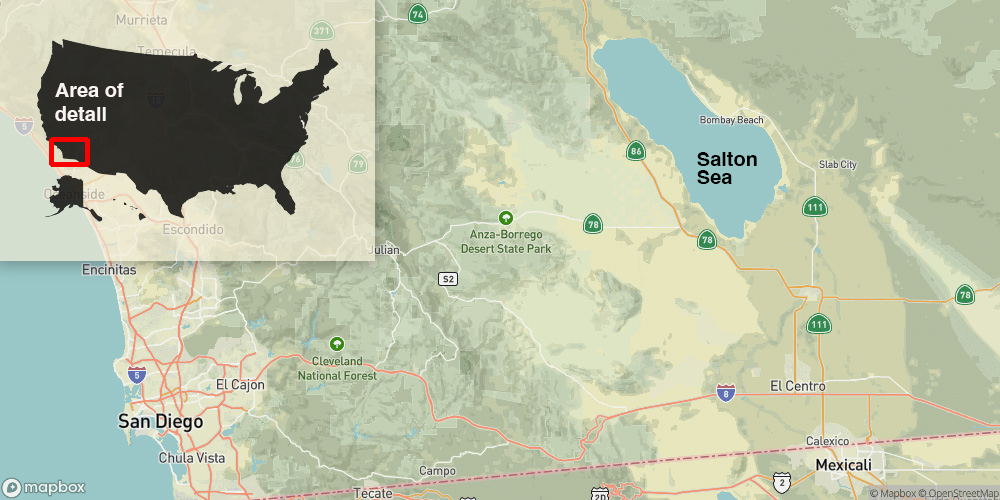
But the good times were fleeting. A series of floods in the 1970s battered many of the shoreline tourism hubs beyond repair. The crowds vanished, leaving abandoned hotels and marinas. For those who remained — mostly poor agricultural workers in the Imperial Valley, as well as Indigenous Kamia-Kumeyaay, Quechan, and Cahuilla people — the problems continued to mount. The 1996 pelican die-off was just one in a string of lurid wildlife mortality events that sullied the lake’s reputation. One newspaper began to refer to the spring and summer months at the Salton Sea as the “season of death.”
The wave of negative publicity generated an upswell of political and scientific interest in the Salton Sea. Sonny Bono, the singer-turned-congressman from California’s 44th district, who used to water-ski at the lake as a youth, began advocating for the lake in Washington D.C., while the Secretary of the Interior simultaneously started to lay the groundwork for a coordinated, multi-agency scientific effort. When Bono died in 1998, Congress passed the Salton Sea Reclamation Act in his honor, unlocking millions of dollars in funding for research at the lake. The Salton Sea Science Subcommittee and, later, the U.S. Geological Survey Salton Sea Science Office were established, with a biologist named Doug Barnum serving as coordinator of the latter. Meanwhile, a University of Redlands environmental scientist named Tim Krantz was tapped to head the Salton Sea Database Program, under the auspices of the EPA, which would synthesize newly gathered data and model the lake system. It was a heady time for research at the Salton Sea, a rare moment when science and policy seemed to be working in concert. “The proverbial you-know-what had not yet hit the fan,” Krantz said in a recent interview with Undark.
As the scientific efforts began to generate results, it became clear that two distinct processes were threatening the ecosystem. The first was rising salinity — Colorado River water, naturally high in salt, entered the lake as irrigation runoff and then evaporated, leaving the salt behind. The creeping salinity levels threatened many of the lake’s organisms. The second was a process called eutrophication, in which nutrient-rich fertilizers fed explosive algae blooms. When the algae died, it fell to the bottom of the lake, where it consumed oxygen as it decomposed. The resulting “dead zones” were responsible for several large-scale fish die-offs, including a 1999 event where 7.6 million tilapia perished in a single day. But as the scientific understanding of the lake grew, researchers like Krantz began to worry that the most immediate threat to the ecosystem didn’t come from salt or nutrients — it came from policy.
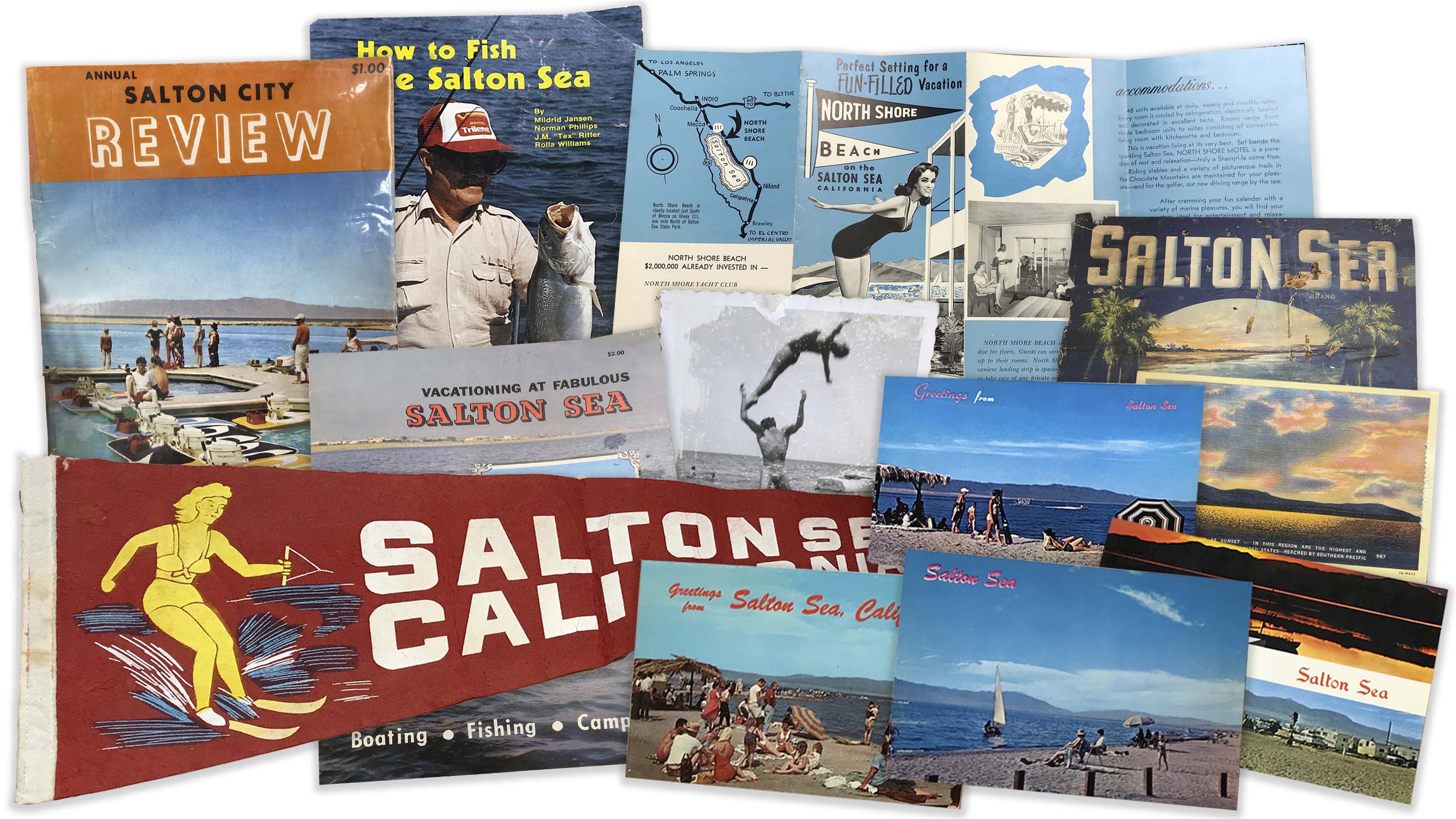
At the time, California was under federal pressure to reduce its Colorado River water usage, which far exceeded its legally allotted 4.4 million acre-feet per year. (An acre-foot is the amount of water required to cover an acre with one foot of water, roughly 326,000 gallons.) In order to scale back, it had been proposed that the Imperial Irrigation District, or IID, which was by far the largest user of Colorado River water, transfer some 300,000 acre-feet per year to other southern California water districts, mainly the San Diego County Water Authority. With the money IID earned through the transfers, it would be able to pay for more efficient irrigation infrastructure, as well as initiate a fallowing program, where local farmers would be compensated in exchange for not producing crops. Less water used for irrigation in the Imperial Valley, however, meant less agricultural runoff — the lifeblood of the Salton Sea. The already troubled ecosystem, Krantz realized, was about to be dealt a devastating blow.
Using new data from the ongoing scientific efforts at the lake, Krantz began to model the potential impacts of the water transfers. The results, he said, were “jaw-dropping.” Within seven to 12 years of those transfers, his models showed, the lake’s salinity would rise to a level that would no longer support fish life, rendering conversations about the ecosystem moot. The lake would shrink rapidly, eventually exposing over 100 square miles of playa, an expanse larger than Sacramento. Wind could then pick up the ultra-fine silt, Krantz realized, and potentially cause devastating air quality events. “That’s where it suddenly became really concerning to all of us that were working on the science subcommittee,” he recalled. “That it’s not about fish and wildlife anymore. It’s about human life.”
Krantz and his colleagues were keenly aware of the case of Owens Lake, about 300 miles to the north, whose tributaries had been diverted in 1913 to slake a thirsty and rapidly growing Los Angeles. By 1926, the lake’s desiccated basin had become the largest source of particulate matter air pollution in the United States (particulate matter pollution, also known as PM10 or PM2.5, depending on the size of the particles, is harmful to human health, no matter its chemical composition). The potential exposed area at the Salton Sea, however, was more than twice as large as the dust-producing area at Owens Lake, and while roughly 40,000 people are affected by the dust fluxes at Owens Lake, some 650,000 people live within the Salton Sea airshed. Barnum recalled that when the USGS Salton Sea Science Office invited Ted Schade, an air quality expert from Owens Lake, to the Salton Sea to assess the potential danger, he told them to keep the lakebed covered by water at all costs.
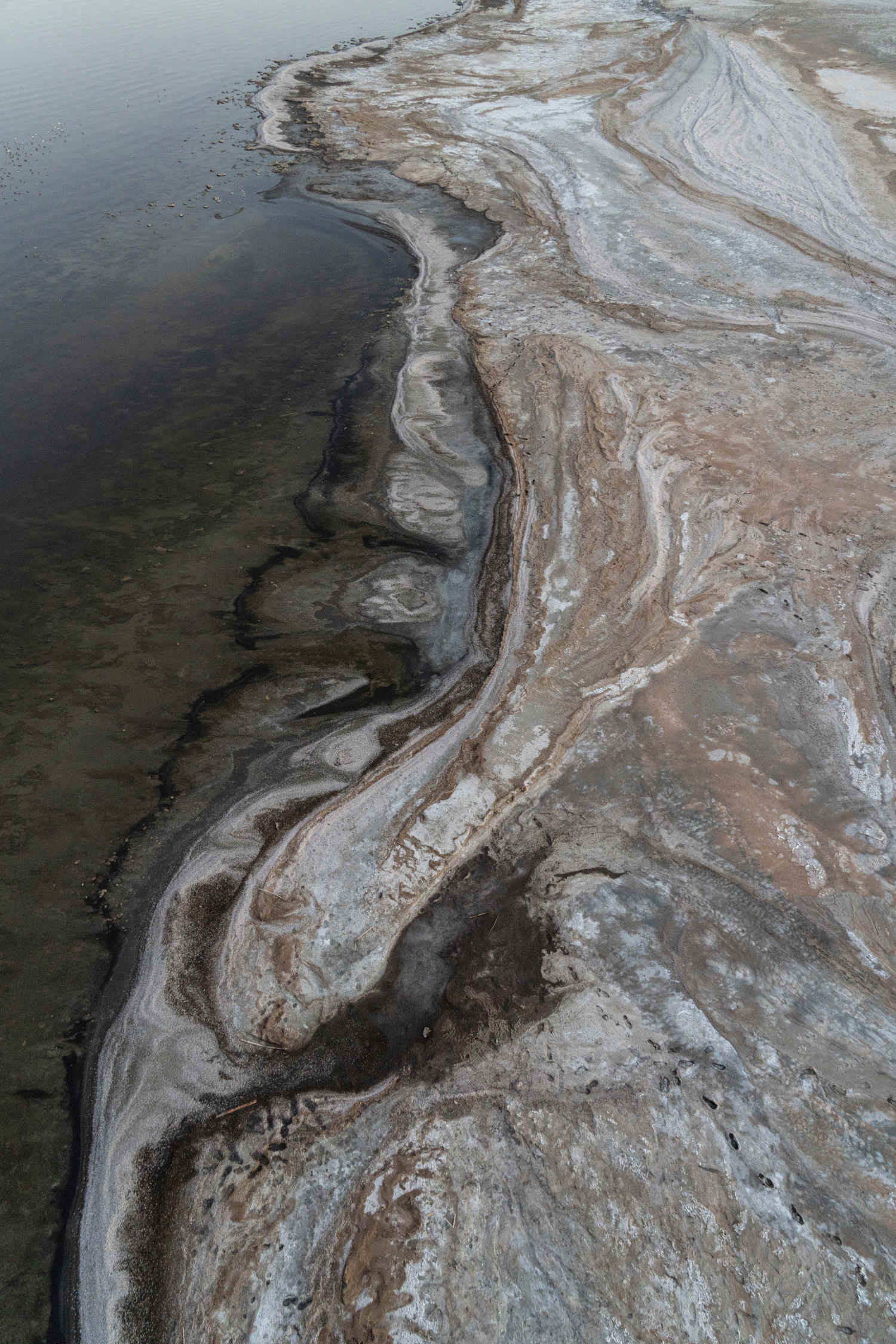
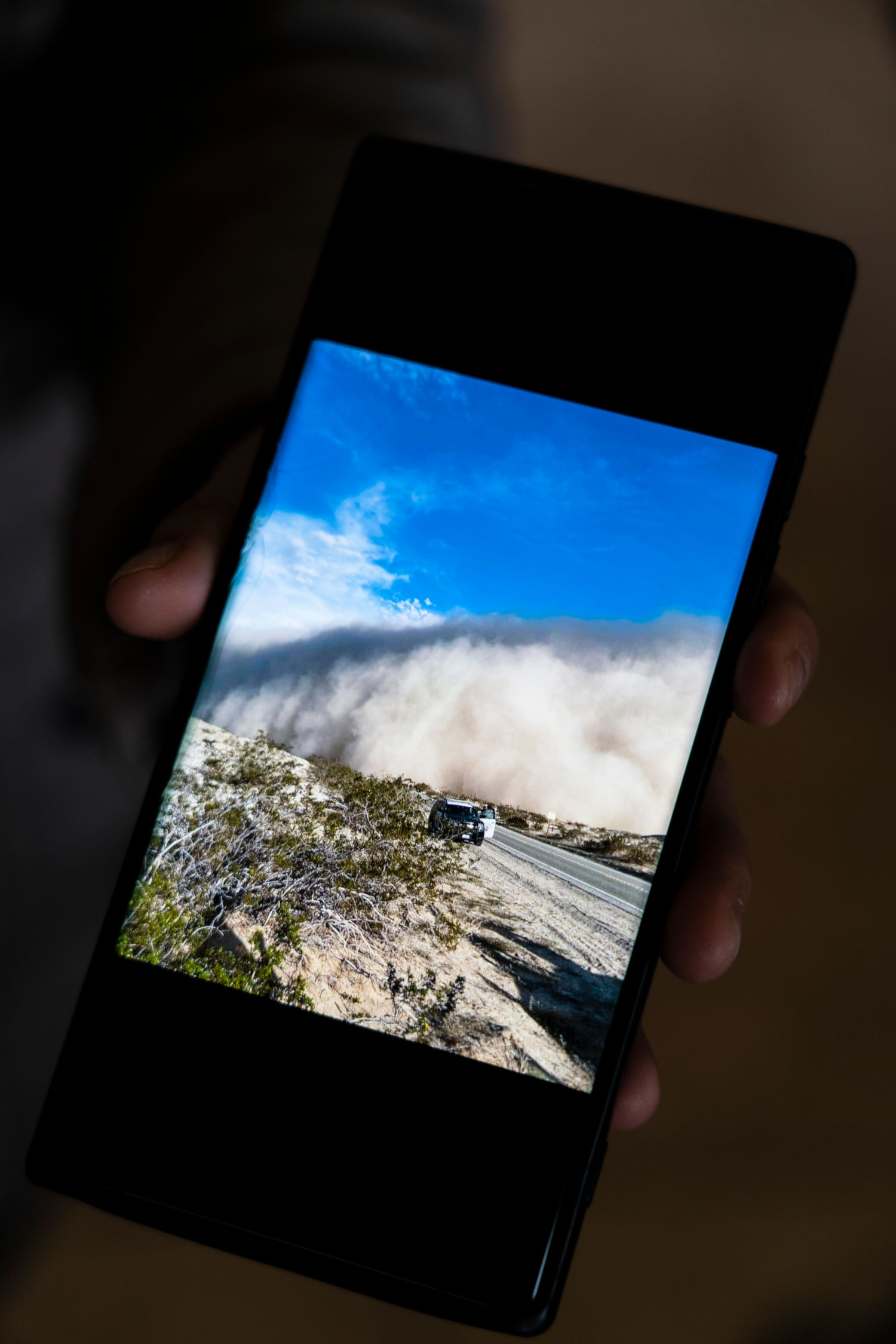
In the spring of 2002, the State Water Resources Control Board, the ultimate arbiter of water rights in California, held a series of hearings to determine whether to approve the transfers, which by then had been folded into a larger set of deals called the Quantification Settlement Agreement, or QSA. Krantz, Schade, and several other scientists resolved to testify so that the board would understand the stakes.
Schade, in written and oral testimony, offered a conservative scenario: If the Salton Sea playa proved just one-tenth as emissive as Owens Lake, it could produce air quality events 27 times over the federal safety standard for PM10. But it wasn’t just the particulate matter that was worrisome. A hydrogeologist named Richard Vogl testified that Salton Sea sediment contained potentially harmful levels of chemicals: cadmium, copper, zinc, nickel, molybdenum, and selenium. The PM10 was harmful on its own, but the presence of these elements in the sediment, according to Schade, was a “double whammy.”
Krantz, in his written testimony, painted a bleak picture: If the transfers went through, the Salton Sea would contract dramatically, dropping by up to 30 feet and exposing huge expanses of lake bottom sediment. Salinity levels would jump, leaving the lake uninhabitable for most wildlife within seven to 12 years. Roughly 200 million fish would die. Bird populations would plunge. And human health in the region would decline, with the blowing dust potentially triggering higher rates of respiratory disease. The board, by denying the water transfers, could avoid the worst of these impacts for another 30 to 60 years, giving scientists time to develop solutions. “The choice is yours,” Krantz told the board.
The board approved the transfers.
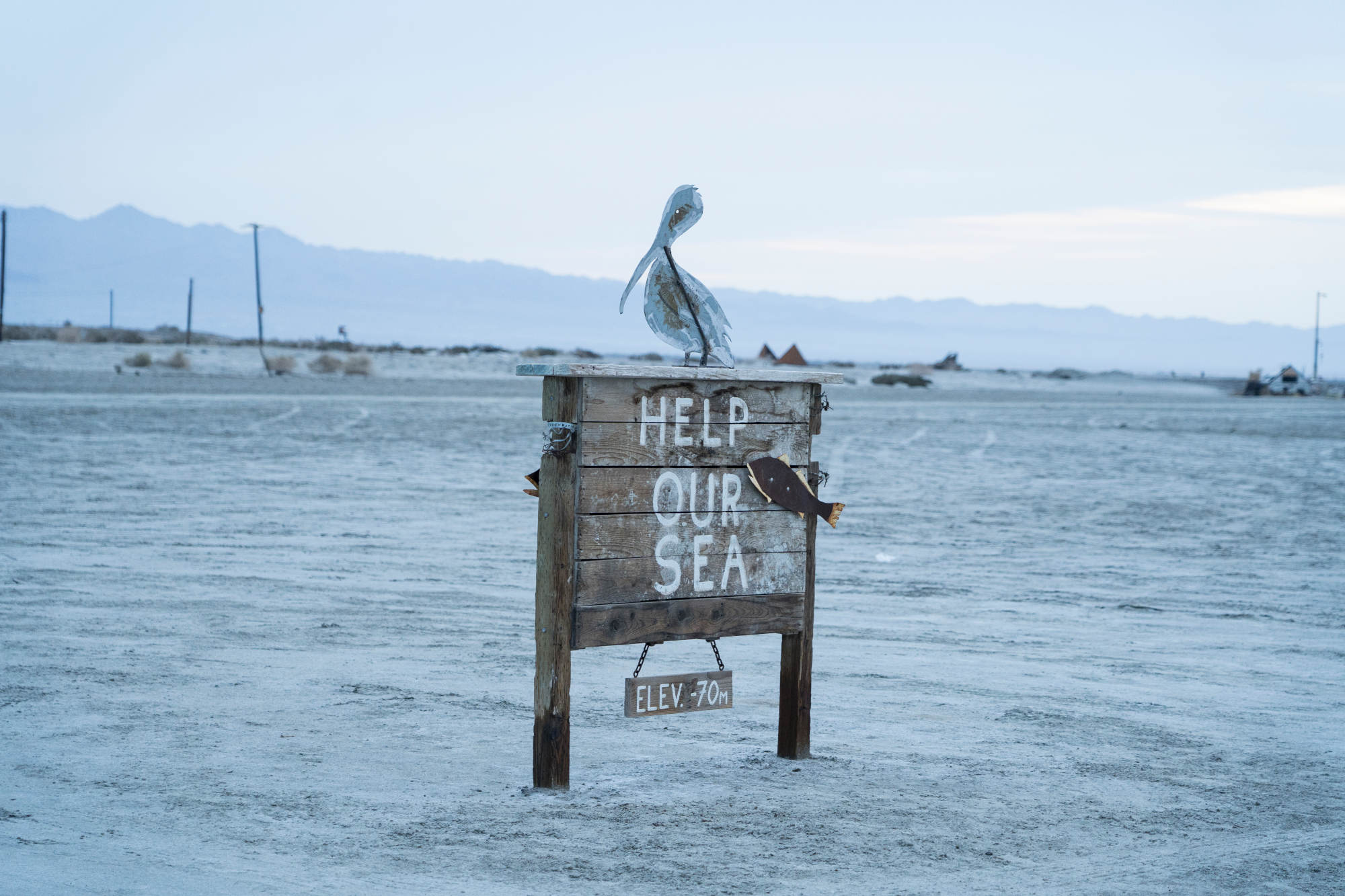
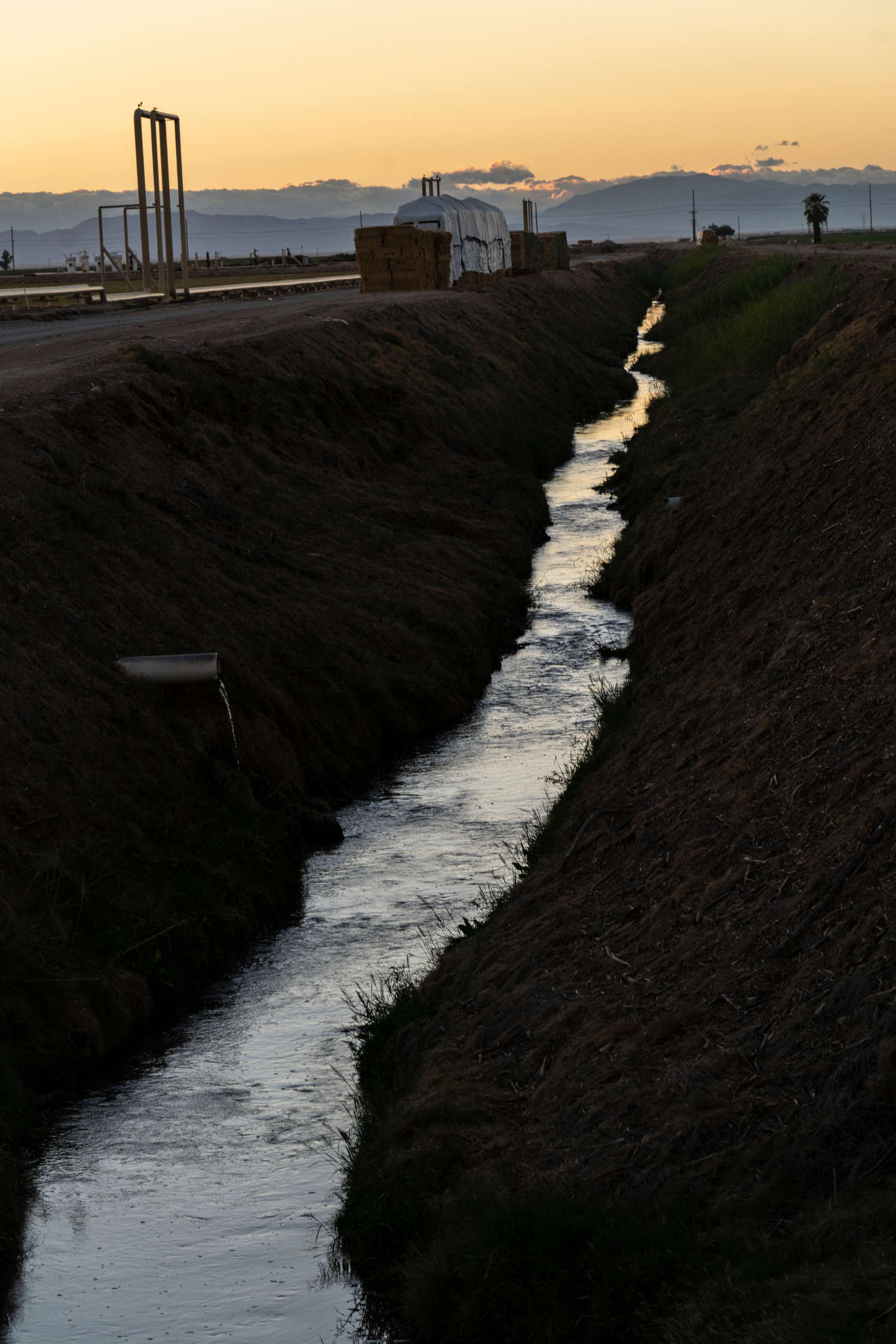
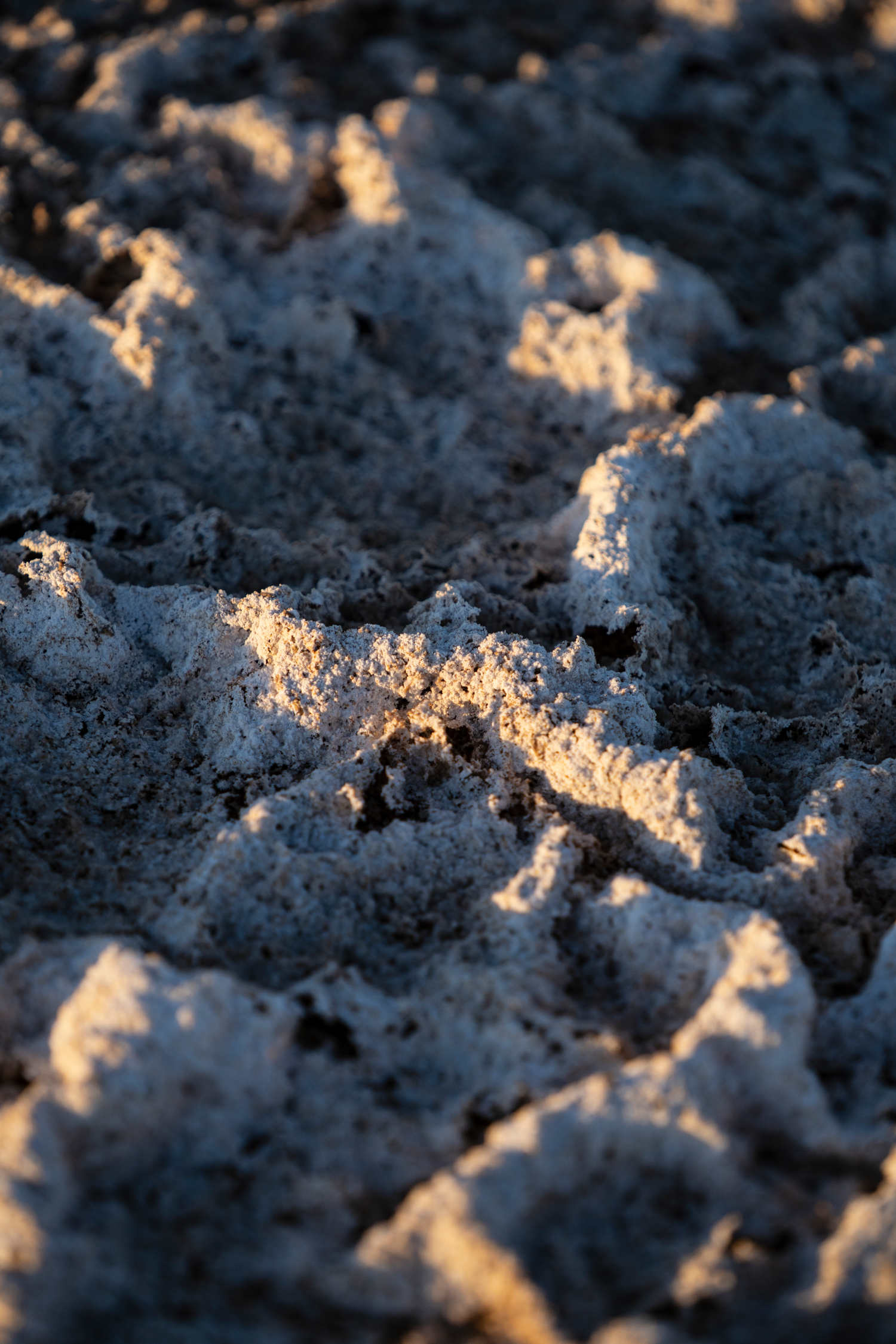
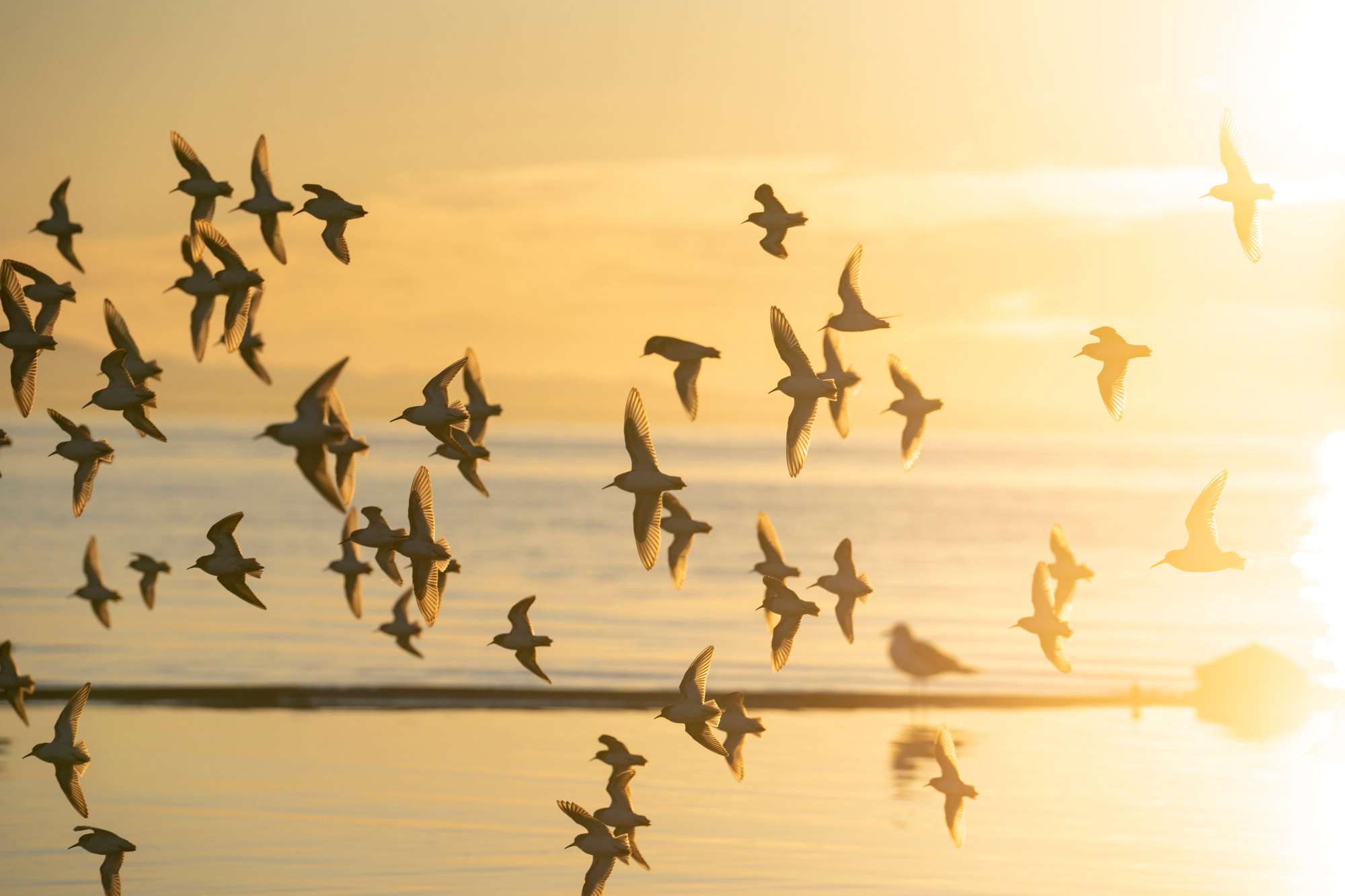
To temporarily stave off the worst impacts of the deal, however, the Imperial Irrigation District was ordered to supply 15 years of mitigation water to the lake, offsetting the lost inflow. In return, then-Gov. Gray Davis signed the Salton Sea Restoration Act, committing the state to “undertake the restoration of the Salton Sea ecosystem.” A deal, then, had been struck: California had 15 years to find a solution.
Arthur Baggett, who chaired the water board at the time, told Undark that he felt the 15-year window amounted to a satisfactory compromise between a complex set of competing interests. But for Krantz, the negotiations over the QSA revealed a troubling reality. “There was this schism between the water politics and the scientific community,” he said. “That schism still is very strong and enduring, and very difficult for us to combat.” Watching the policy diverge from the science, he added, “was like watching a slow-motion train wreck.”
Following the passage of the QSA, Barnum, the Salton Sea Science Office coordinator, began working with state officials, offering recommendations on how to develop a scientifically sound restoration strategy that considered the anticipated diversion of water. When the California Natural Resources Agency, which had been tasked with leading the restoration effort, established a science advisory committee to provide direct scientific input to the state, Barnum was chosen as its chair.
Since the late 1990s, Barnum and many other scientists had been calling for a comprehensive, integrated science program at the lake. As the committee chair, he hoped his input could help put such a program into action. Among other things, he advocated for using regular data collection at the lake to develop conceptual and predictive models of the Salton Sea system, which could be used to evaluate potential management scenarios. Such a program, Barnum believed, was a crucial first step in developing an effective strategy. Without it, managers would be shooting in the dark. “You can’t make recommendations based on speculation,” Barnum said in a recent interview.
But Barnum’s vision, which was widely shared in the scientific community, failed to gain traction within the state agencies. Instead, he said, they reverted to a piecemeal approach, looking at slices of the lake system that were deemed important for specific management decisions, with no regard for how they interacted to form a dynamic whole. Crucially, the state failed to establish a central repository for the scattered data that was collected by various scientists, so there was no way to synthesize the information into useful models. (Krantz’s efforts to fill this role began to run aground in 2003, when his funding dried up.) Furthermore, Barnum said, the state neglected to implement a basic monitoring program, to keep track of changes in the evolving body of water.
Barnum grew increasingly vexed by what he saw as the state’s unwillingness to gather critical data on the lake system. In 2005, he recalled, he attended a meeting in San Diego whose attendees included the state’s Secretary of Resources, as well as state senators and congressional staff. There had been a recent gypsum bloom at the lake — a then-poorly understood phenomenon where hydrogen sulfide interacts with oxygen and calcium to produce the mineral, lending the lake a peculiar, green appearance. After Barnum showed images of the event, which drew gasps, the participants waited for an explanation. “Here’s the problem,” he recalled telling them. “This is going to happen again and again and again, and every time you’re going to ask me, ‘Why is it happening?’ And I’m going to shrug my shoulders 10 years from now and say ‘I don’t know, because we don’t have any monitoring to tell us what’s going on.’”
The scattershot scientific approach of the state, according to Barnum, led to critical knowledge gaps — especially regarding the dust. Barnum had come to view the potential health impacts of the dust as one of the most urgent questions facing the region. It was imperative, he believed, to determine not only how much of the dust was likely to become airborne, but also its potential toxic impact on humans. Yet despite Barnum repeatedly raising the issue with agency officials, nothing was ever done. “Management was just not concerned to throw any money at it — to throw any research dollars at it,” he said. “Despite the urgency, despite the legal ramifications, there just was no interest.”
Others within the scientific community were similarly trying to foreground the issue. In 2006, Michael Cohen, a researcher with the Pacific Institute, a water policy think tank, co-authored a report — reviewed by Barnum, among others — that described a future even more dire than Krantz’s projections. Using a new hydrological model developed by an independent consultant hired by the state, Cohen predicted that 134 square miles of playa would be exposed by 2036 — an area nearly twice as large as Washington D.C. That exposure would result in roughly 86 tons of additional dust entering the Salton Sea airshed per day. The report concluded that the problems at the Salton Sea would ultimately result in “exorbitant costs, in terms of human health, ecological health, and economic development.”
The science program that Barnum had been calling for never happened, nor was there ever any rigorous study of how much of the playa’s dust may become airborne. But the scientific community’s concerns did trickle into a plan that the California Natural Resources Agency delivered to the legislature in May of 2007. Called the Salton Sea Ecosystem Restoration Program, or the “preferred alternative” colloquially, the plan noted that, if approved, “monitoring and testing activities would be conducted to identify the potential for and rate of dust emissions, determine chemical characteristics of the playa, and analyze response of salt crusts and sediments to humidity and wind.” An earlier draft had acknowledged that if the lake shrank as expected in coming years, “there could be dust from the exposed playa, affecting both wildlife and humans.”
Ultimately, the agency’s measured recognition of the dust problem didn’t make any difference. When the California legislature considered the “preferred alternative,” which would cost an estimated $8.9 billion, they promptly shelved it.
By 2013, a full decade after the passage of the QSA, the state of California had still done nothing to restore the Salton Sea. Following the dismissal of the “preferred alternative” by the legislature, agency officials had shifted focus to salvaging one small part of the plan, a several-thousand-acre wetland complex on the lake’s southern shore, called the Species Conservation Habitat, or SCH. But even that modest project stalled — five years after it had originally been proposed, all that existed of the SCH was an environmental impact report. Meanwhile, other southern California water districts continued to enjoy the benefits of the water transfers. As locals of the Salton Sea region stared down an imminent ecological and public health calamity, residents of San Diego used nearly 200,000 acre-feet of water — roughly double what they received from the QSA transfers that year — to water their lawns.
As it became clear that California was faltering on its legal obligation to restore the lake, tensions began to rise among the parties of the QSA. Board members at the Imperial Irrigation District, which had been fulfilling its side of the bargain every year by transferring the water, grew impatient with the state. “We weren’t seeing progress, the board was incredibly frustrated, we were starting to see shoreline receding,” recalled Tina Shields, the water department manager at IID.
“The board said we’d had enough,” she added. In 2014, IID filed a petition with the State Water Resources Control Board, asking it to intervene.
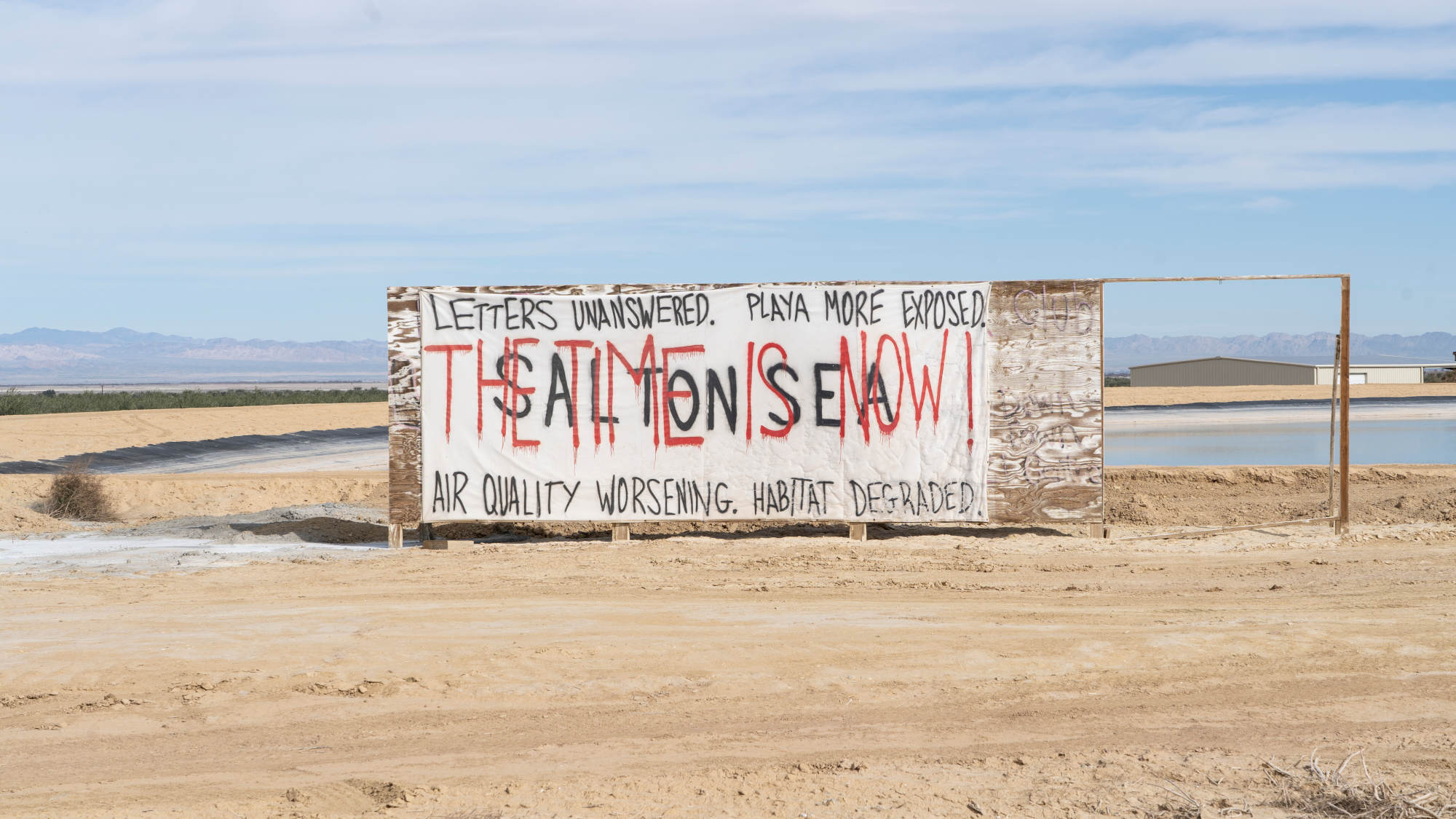
While the IID petition churned through the bureaucracy of the water board, which would not ultimately act on it for three years, the scientific community continued to advocate for a comprehensive science program at the lake. Barnum and others had spent seven years after the demise of the preferred alternative developing the Salton Sea Ecosystem Monitoring and Assessment Plan, a framework for how to integrate scientific inquiry into future management (the plan had no funding, and waited, as it said in its executive summary, “in anticipation of direction from the legislature”). In 2014, following the MAPS completion the previous year, Barnum, along with Cohen, the Pacific Institute researcher, and a biologist from the University of California Irvine named Tim Bradley, organized a meeting of some 50 scientists to assess the current state of Salton Sea science. The meeting yielded a package of research proposals, amounting to roughly $47 million, that would plug the perceived knowledge gaps at the lake and help guide state officials toward meaningful solutions. A summary report concluded: “The focus of immediate, urgent priority is related to air quality, fugitive dust, and related human-health issues.”
Still, the state failed to act. Cohen, hoping to capture the attention of policymakers by putting the problem in monetary terms, authored a sequel to his earlier report in which he argued that inaction also generated costs — but those costs would ultimately be borne by those least able to afford them: the residents of the area. He estimated that without state intervention, health care costs directly related to the dust could soar to $37 billion through 2047. Additional costs from decreased property values, potential loss of agriculture, diminished recreational revenue, and up to $26 billion in lost ecological value would combine to make restoration plans — even the $8.9 billion preferred alternative — seem frugal in comparison.
Cohen told Undark that he believes the report moved the needle somewhat. Still, he said, policymakers tend to incorporate science selectively, using “science if it supports their policy objectives. But if it doesn’t, then they ignore it.” He later added, “I’m used to being ignored.”
As the 15-year clock was running out on the mitigation water, scientists, once again, tried to sound the alarm. They attended meetings with agency managers, wrote op-eds, organized public speaking events. Tim Bradley, who headed a research effort at UC Irvine, helped launch a petition calling for the water transfers to be regulated until the state could implement mitigation measures. Years passed with no concrete action. “We just kept saying, ‘Is anybody paying attention?’ It’s very clear what the science is here, is anybody paying attention?’” recalled Bradley. “We just kept trying and we just kept trying.”
Finally, in March of 2017, the state of California, which had reorganized its efforts into a new initiative called the Salton Sea Management Program, released a 10-year plan calling for roughly 30,000 acres of habitat and dust suppression projects, to be completed by 2028. The plan, which was estimated to cost $383 million (and had secured funding for less than a quarter of that amount), no longer discussed restoring the Salton Sea — instead, it laid out a partial mitigation and management strategy for a “smaller and sustainable sea.” The original 2003 legislation committing California to the restoration of the lake had set an objective to attain “historic levels and diversity of fish and wildlife.” The new plan ignored that goal, instead aiming for simple acreage milestones — which together accounted for less than half of the playa expected to be exposed by 2028. Still, after 14 years of stagnation, the state now appeared committed to a course of action.
A few months after the release of the 10-year plan, the water board finally convened to settle the matter of the 2014 Imperial Irrigation District petition. Cohen, Bradley, and others traveled to Sacramento to speak, as did several residents of Mecca, a town on the north side of the lake. Bradley attempted to persuade the board to slow the water transfers until the state could catch up with its mitigation strategy. “It’s unconscionable,” he told them, “to wait for illness and deaths to manifest themselves in the communities around the sea before acting.” Later in the meeting, a young man from Mecca named Christian Garza spoke. Garza had suffered from asthma his whole life, and two years prior had nearly died from a collapsed lung during an attack. “I love the valley. I love my community. But I’m also scared of it,” he told the board.
“I will die in the valley if I stay there for more than five years,” he added. “I’ve seen the dust.”
The water board opted to allow the transfers to continue unchanged. But in an effort to improve California’s accountability, it obliged the state to reach the annual acreage goals laid out in the 10-year plan, and required that officials deliver an annual report updating the board on its progress. The order, however, completely lacked an enforcement mechanism. “The only tooth in there is shame,” Cohen told Undark. “It’s not clear how responsive they are to shame.”
On Jan. 1, 2018, the mitigation water essentially stopped flowing to the Salton Sea. The lake’s surface elevation began to decrease at nearly twice its previous rate, losing roughly a foot annually. To date, nearly 30 square miles of playa have been exposed — the equivalent of roughly 13,000 football fields. Meanwhile, the state has missed every single one of its acreage milestones, and each year it falls further behind.
In Brawley, decades of living with asthma have made Trianna Morales and Cyrus Ramirez adept at reading wind patterns. Morales uses a nearby crop of hills, called Superstition Mountain, as a quick and simple gauge of air quality — if they can see the hills clearly, criss-crossed by off-road tracks and buzzing with dune buggies and dirt bikes, they know to relax. If the hills appear hazy, though, or shrouded by plumes of blowing dust, Morales knows to keep their inhalers close, and pay keen attention to the sound of their children’s breathing. And if the wind is blowing from the north, the direction of the Salton Sea, they remain especially vigilant.
These are the subtle adaptations that occur over a lifetime of coping with asthma. Less subtle are the constant doctor’s appointments, the trips to the emergency room. Although Morales and Ramirez both connect their family’s asthma to the Salton Sea, they can’t afford to leave, and have lost faith that the state will ever do anything to improve the situation. “The word that comes to mind,” said Morales, “is ‘hopeless.’”
In the absence of much government intervention, residents of the so-called fenceline communities of Brawley, Westmoreland, Calipatria, and Niland, have tried to design and implement their own programs to reduce harm from the Salton Sea. The Brawley-based nonprofit Comité Cívico del Valle has developed a flag-warning system with local schools: each morning a green, yellow, orange, or red flag is hoisted in accordance with the day’s air quality risk. CCV also runs an asthma-education outreach program that sends workers into the community to teach families how to best protect themselves — the box-fan air purifier in Morales’s living room was brought over by their asthma outreach worker, who suffers from respiratory issues herself.
But preventative measures can only do so much. When severe asthma attacks strike, the emergency room at Pioneer Memorial Hospital in Brawley serves as the first line of defense. Oscar Garcia, the emergency room director, said that roughly 20 percent of admissions are pediatric respiratory cases. “Winter time, every day we have one, two, three, four, or more patients that come in with an asthma attack,” said Garcia. “Our supply of asthma tools and equipment is always ready.” Usually, the children respond to increasingly aggressive treatments with albuterol and steroids. Sometimes, though, they must be intubated and flown to Rady Children’s Hospital in San Diego. Garcia knows how distressing these ER visits can be for families — he used to have to take his own asthmatic son to the hospital about once a year.



Some children, though, don’t make it to the emergency room in time. In April 2022, in Bombay Beach, on the eastern shore of the Salton Sea, a 12-year-old girl named Tashia Taylor suffered a severe asthma attack after riding her bicycle near the shoreline. After several days on her nebulizer, her condition failed to improve. While her mother, Tashi Bolden, was out getting gas for her vehicle in case she needed to bring her daughter to the hospital, Tashia collapsed. Bolden says it took the paramedics 45 minutes to reach Bombay Beach from Brawley, during which time she and a police officer performed CPR on her daughter. But neither they, nor the paramedics when they arrived, were able to revive Tashia.
Although such deaths are rare, they rattle the community, and add a desperate urgency to calls for a lasting solution at the Salton Sea. Bolden, now haunted by grief, has a simple request for policymakers: “Clean it up,” she said. “Clean up that beach, that water.”
But Morales believes such pleas fall on deaf ears. Imperial County is poor, mostly Latino, and geographically set apart from the southern Californian urban centers of San Diego and Los Angeles. It’s not that policymakers are unaware of what’s happening there, said Morales, it’s that they simply don’t care. “We won’t probably get help until everybody else gets help,” said Morales. “We’re the bottom of the dogpile.”
On an overcast morning in early January 2023, Charlie Diamond and Caroline Hung, geochemists from UC Riverside, pulled their car onto a dirt road leading to Obsidian Butte, a slight promontory of volcanic rock overlooking the Salton Sea. They parked on the far edge of the outcrop, then continued on foot through a sloping scree field of glassy black stone until they reached a view of the mud flats to the east. There, a wide sweep of barren earth stretched from the water’s edge to a pale band of vegetation some 200 yards away. “This is just a nice visual representation of the rapidly receding shoreline,” said Diamond.
“This is all recently exposed,” he added.
Diamond and Hung are members of the UC Riverside Salton Sea Task Force, an interdisciplinary research group that comprises the latest effort by scientists to mount an organized response to the unfolding regional catastrophe. As one of only two teams that studies the lake by boat, Diamond and Hung say that the dropping water level has begun to pose serious logistical challenges to their research. There are no longer any functioning docks at the Salton Sea, and to launch their 300-pound, fiberglass-hulled Zodiac, they must now drag it through mud that can feel like quicksand. “Every little foot the water has receded is going to pose like 30 more minutes of effort,” Hung said.
Of their ability to launch the boat on the lake, she added, “there’s going to be a limit.”
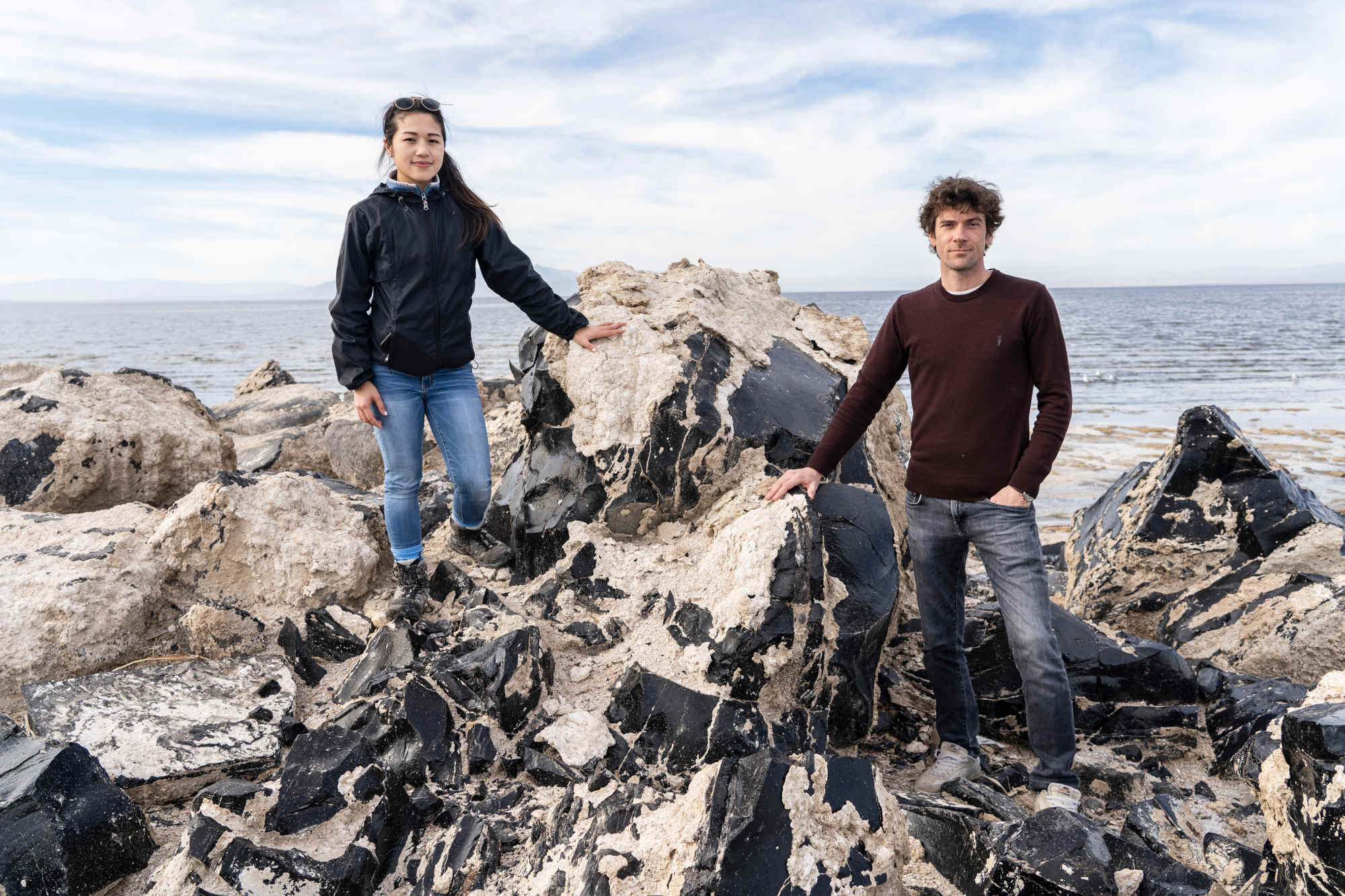
In 2021, the task force published a report, in which the team noted “the absence of an adaptive, science-based approach to addressing the environmental and human health challenges at the Salton Sea.” By then, the state had finally broken ground on the Species Conservation Habitat, the 4,100 acre wetland complex that had originally been proposed as a smaller, 2,400-acre project 13 years prior. It had also begun implementing several hundred acres of temporary dust suppression projects on the newly exposed playa (mostly surface-roughening), although these were within the boundaries of the SCH and would be flooded upon its completion. But the task force argued that “although state agencies are making efforts to mitigate the problems, the scientific assumptions informing current management practices are outdated or lacking entirely, making outcomes unpredictable at best.”
In the report, as well as in subsequent interviews with Undark, the UC Riverside group flagged several worrisome oversights. The group’s hydrologist argued that the state’s hydrology model was incomplete, overlooking the potential for lake water to discharge into underground aquifers, as well as failing to explicitly represent how shifting human activities in the region could affect inflow. Additionally, the task force noted that the exposed playa will likely not be uniformly hazardous, and that, as the lake recedes, the exposed dust could become increasingly toxic. Mice exposed to that dust, the team found, displayed dramatic pulmonary inflammation, while mice exposed to control dust collected 50 miles away from the lake did not. That type of inflammation, the researchers noted, could present as asthma-like symptoms in humans.
For Timothy Lyons, a UC Riverside geochemist, the dust is especially worrisome given the changing demographics of the region. Spurred in part by a potential lithium bonanza (geothermal brine underground near the Salton Sea could contain enough lithium to meet one-third of the global demand), the population of the Salton Sea airshed is predicted to double in the coming years. “They’re talking about bringing thousands of people down there on the south shore of the Salton Sea,” said Lyons. “An area that by some measures should be evacuated.”
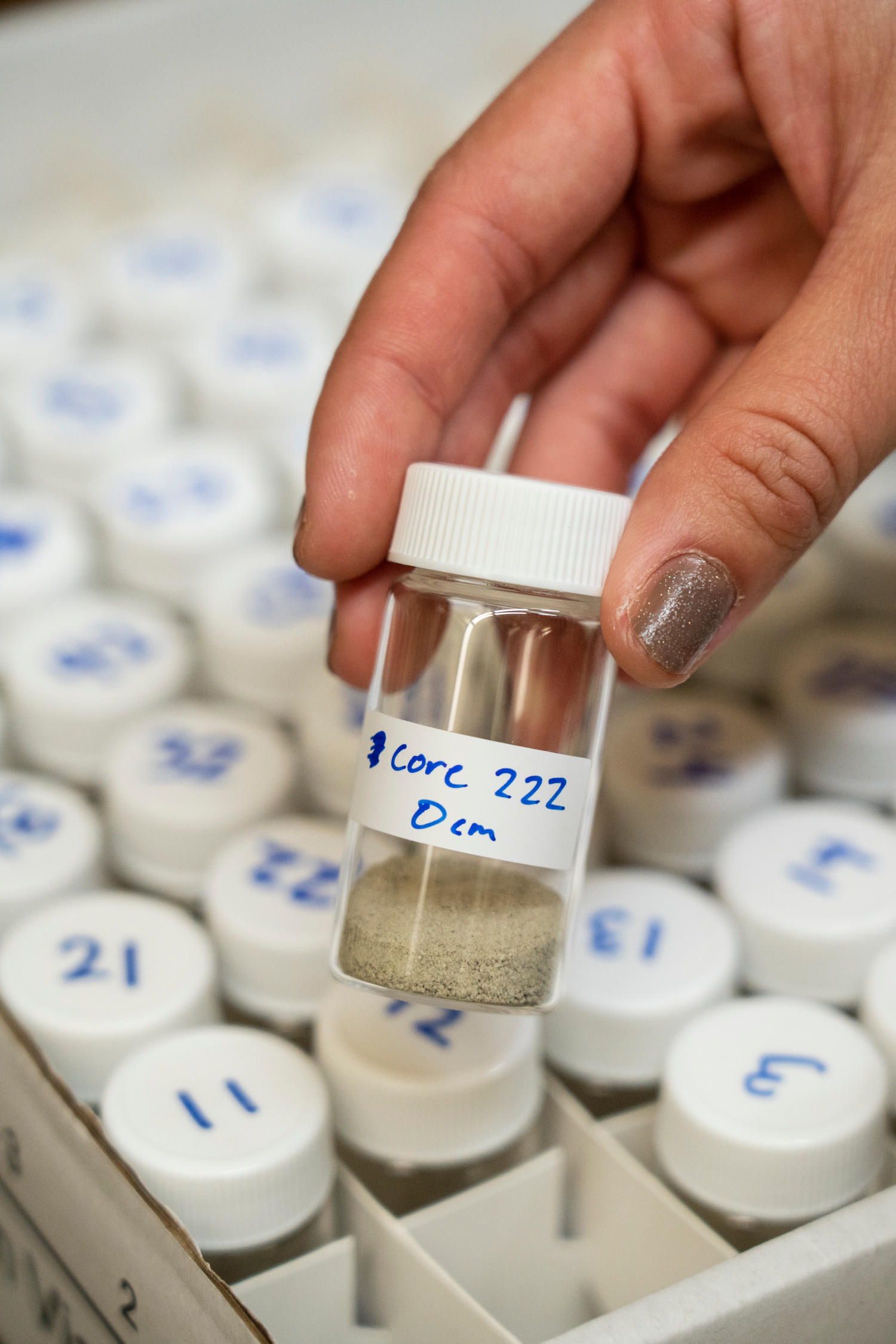
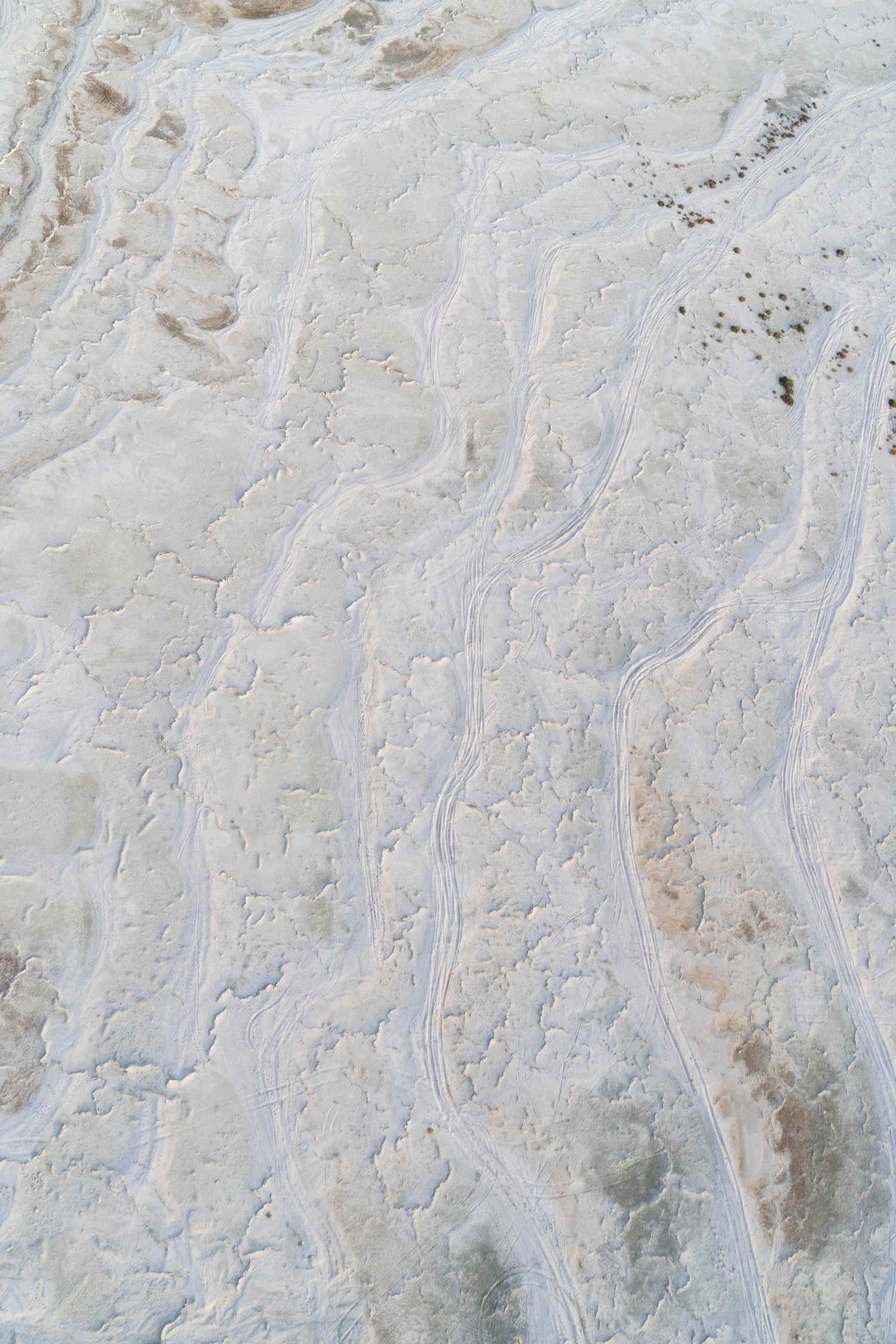

Yet despite the increasingly well-understood dangers posed by the shrinking lake, the state’s response has stopped short of addressing the community’s health concerns. Tonya Marshall, a senior official with the state’s Salton Sea Management Program, said that the community’s health problems are beyond the scope of the current mitigation efforts. “That’s not where the goal of the SSMP was or is,” she said. “If somebody had stated ‘well, the SSMP’s goal is to make it better for all of humans there,’ then there would be that aspect of that. But our goal right now is 30,000 [acres] of the habitat and dust suppression projects with the 10-year plan.”
For many scientists, however, it is precisely that kind of rigid, compartmentalized thinking that lies at the core of the problem at the Salton Sea. “We can’t just put blinders on,” said Cohen. “We need to know what’s going on with the Salton Sea, not just how many acres we’re building.”
Diamond and Hung agree. “There’s a lot of disconnect,” said Hung. “Everybody’s just trying to do their job.”
On Dec. 3, 2022, a community advocacy group called the Salton Sea Coalition held a public forum at an auditorium in Palm Desert, about 30 miles northwest of the lake. Many of the members of the UC Riverside task force appeared as expert panelists, and the crowd (who appeared to largely support a hypothetical plan to import water from the Sea of Cortez, which many scientists view as unrealistic) listened attentively as they described the scientific nuances and lingering uncertainties at the lake. But at one point, frustration boiled over. During a Q&A with the scientists, a community member named Art Gertz took the microphone. “We’re being told we need more studies!” he quipped. “We should study why we need more studies!” For Gertz, a longtime advocate of importing water, the solution to the lake’s woes was blindingly clear: “Just. Add. Water!” he proclaimed. The crowd erupted in applause.
Sitting a few rows back, Diamond and Hung listened patiently. Gertz’s was an attitude they had encountered frequently in their outreach work, and although they disagreed with his viewpoint, they sympathized with the man’s frustration. Years of neglect, false starts, broken promises, blown deadlines, poor communication, and bureaucratic torpor had made locals weary of anything that smelled of can-kicking — they were desperate for action that would yield results. “That is a very real sentiment: ‘Enough studies, we need action,’” said Diamond. “I completely understand that sentiment.”
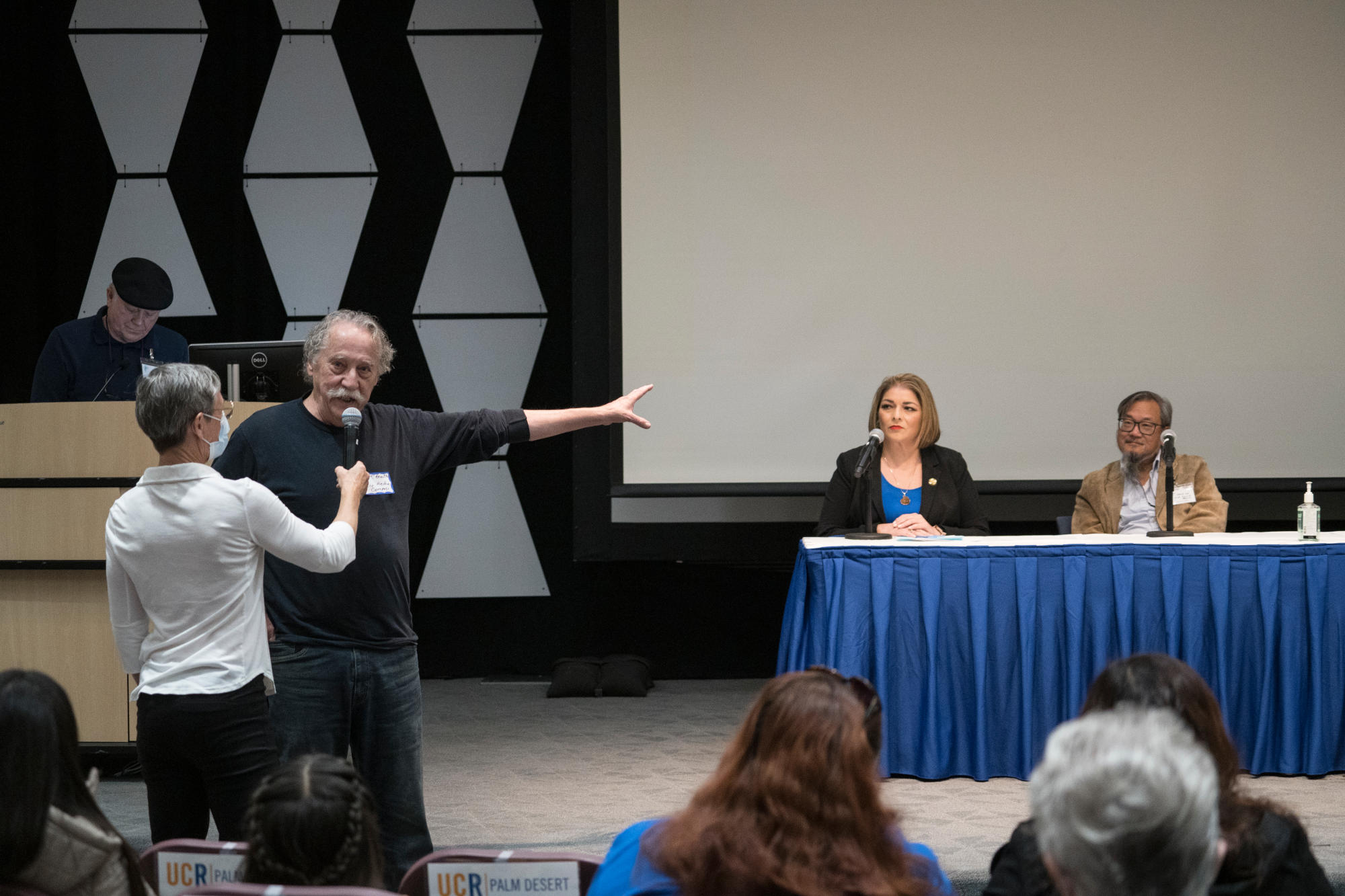
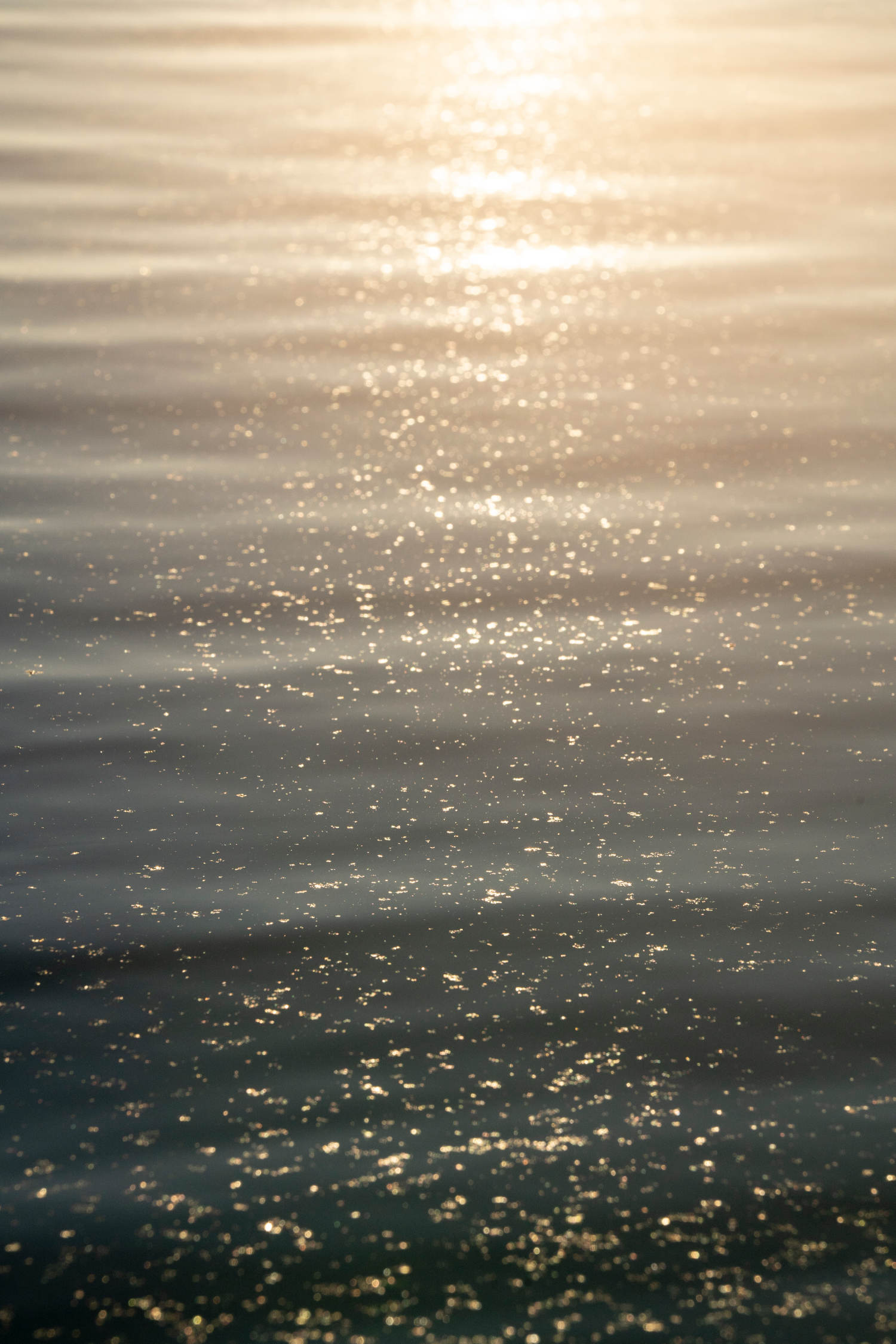
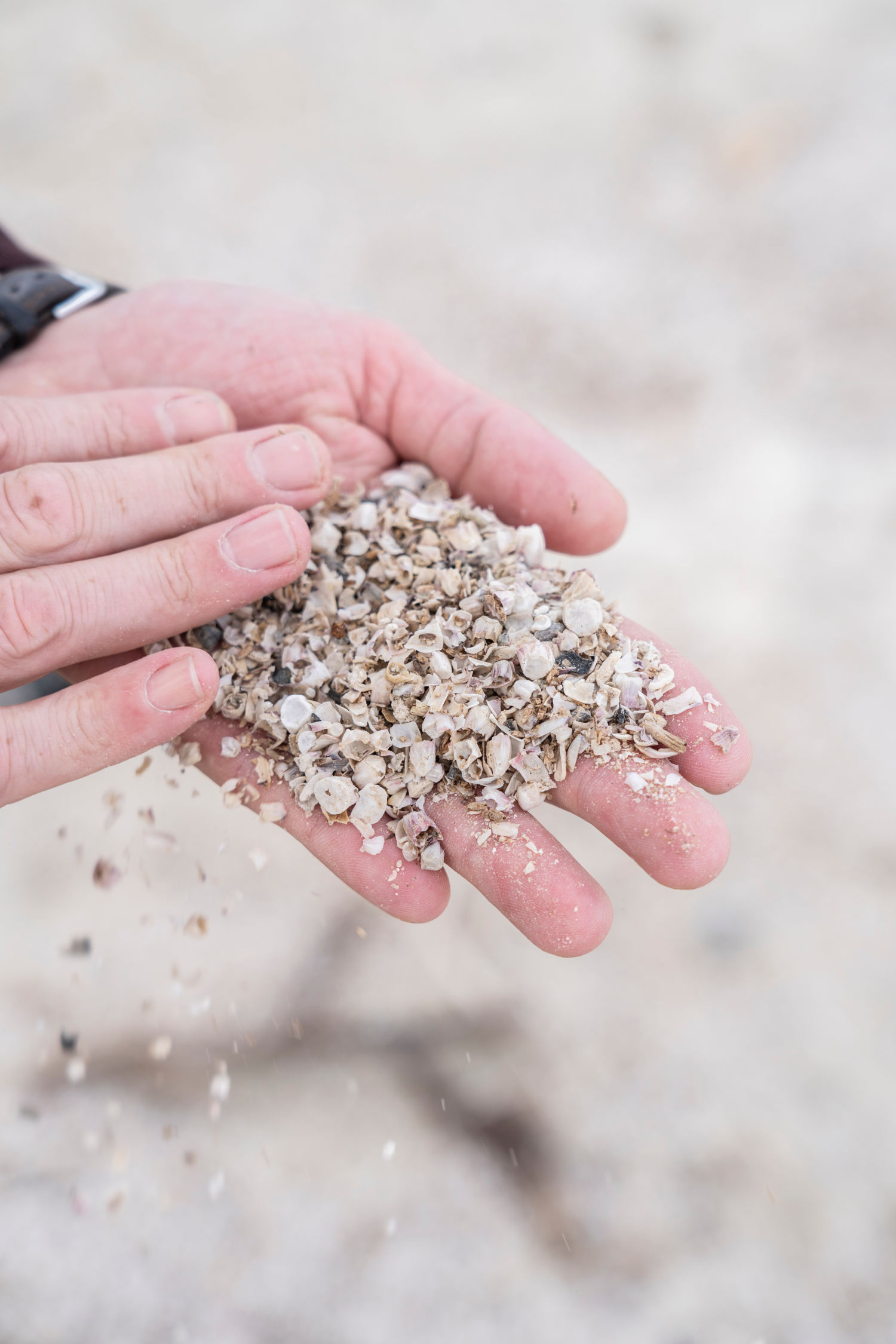
But in December 2022, after contemplating a range of potential restoration strategies beyond the lagging 10-year plan, California decided to punt to the Army Corps of Engineers, which, in partnership with the state and local stakeholders, recently initiated a study aimed at determining the best long-range course of action. It is anticipated to be done by 2025. Once completed, the agreed-upon plan must be delivered to Congress, which would only then decide whether to furnish federal funding to enact it. For a community whose children are sick and getting sicker, and whose exasperation is already white hot, the Army Corps study will likely only inflame the opinion that the lake is, as Gertz claims, being studied to death.
Researchers like Cohen, meanwhile, are left feeling ambivalent about the best path forward. Historically a staunch advocate for a rigorous, science-based approach, Cohen said that lately he’s been identifying increasingly with the position that the state should just do something — anything — and hope that it works. “On one hand, I think ‘Screw it, just build some projects.’ You get some water on the ground, birds are going to show up and vertebrates are going to populate those ponds. And then you’re going to minimize dust. So let’s just do that,” he said. “On the other hand, it’s kind of irresponsible to spend a billion dollars and not really know what’s going to happen.” Either way, as the ecosystem approaches critical thresholds and more playa is exposed each year, one fact has become vividly clear to Cohen: “We’ve run out of time.”
The problems at the Salton Sea have now persisted for so long that multiple generations of scientists have come and gone. Krantz, Barnum, and Bradley have now all retired, making way for a new generation — Diamond and Hung among them — to continue advocating for the role of science at the lake. Among the older generation, a certain jaded pessimism has settled in; Cohen said that the past two decades didn’t even feel Sisyphean, because “that suggests we actually got the rock to the top.” Particularly troubling to many scientists who spoke to Undark is the sense that local residents have been deemed acceptable collateral in the west’s great water wars. The Salton Sea, Krantz said, “boils down to one of the most serious, exigent environmental justice issues globally.” For younger scientists like Diamond and Hung, the inequities of the region have exerted a moral pull, shifting the priorities of their lives. Diamond, who has become besotted by the lake’s oblique, alien beauty, said that working on a problem with real-world implications has changed him. Now, he said, “I want to do things that have an impact.” Hung has been galvanized by her experiences at the Salton Sea into considering law school, so that she can study how to better incorporate science into policy. “I think it takes expertise in both to really think of a solution,” she said.
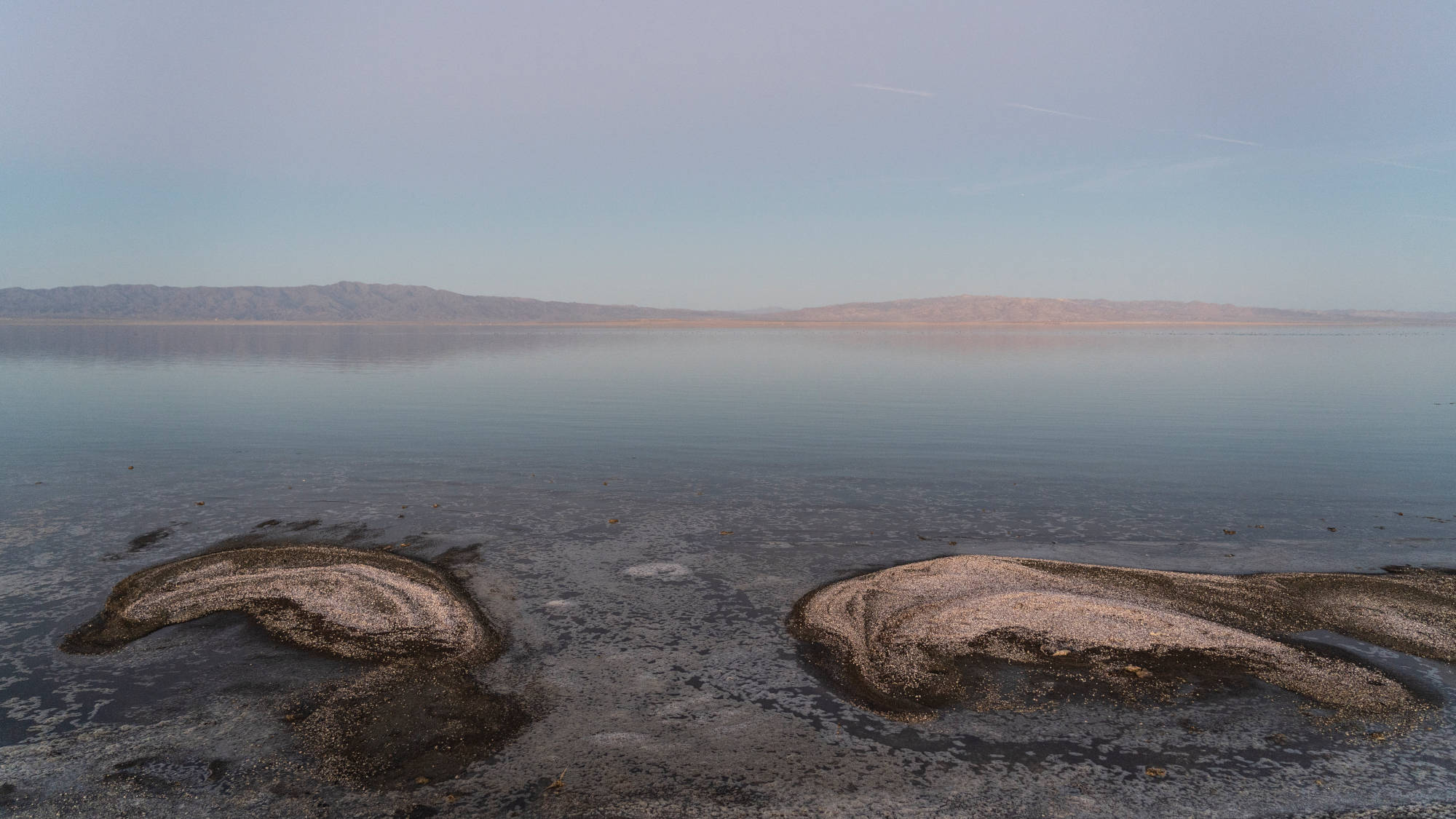
Yet just as the lake, and the region surrounding it, have drawn researchers in, others are desperate to get out. Morales and Ramirez believe their asthma, and Luna and Frederick’s, is getting worse. They say they are exhausted, and have lost all faith in anyone helping them or their community. “If we had money, obviously we would be gone,” Morales said. “But we just don’t.”
Still, they like to picture it: a farmhouse near Flagstaff, Arizona, with a wraparound porch and clean, mild wind. Or maybe somewhere near San Diego — they aren’t too picky. Morales has just one strict criterion: “I want it to be fresh,” they said. “I want to be able to breathe.”
This article was supported in part by The Water Desk, an independent journalism initiative based at the University of Colorado Boulder’s Center for Environmental Journalism.
Fletcher Reveley is a freelance writer based in Tucson, Arizona.
Kitra Cahana is a Peabody Award-winning documentary filmmaker and photographer.










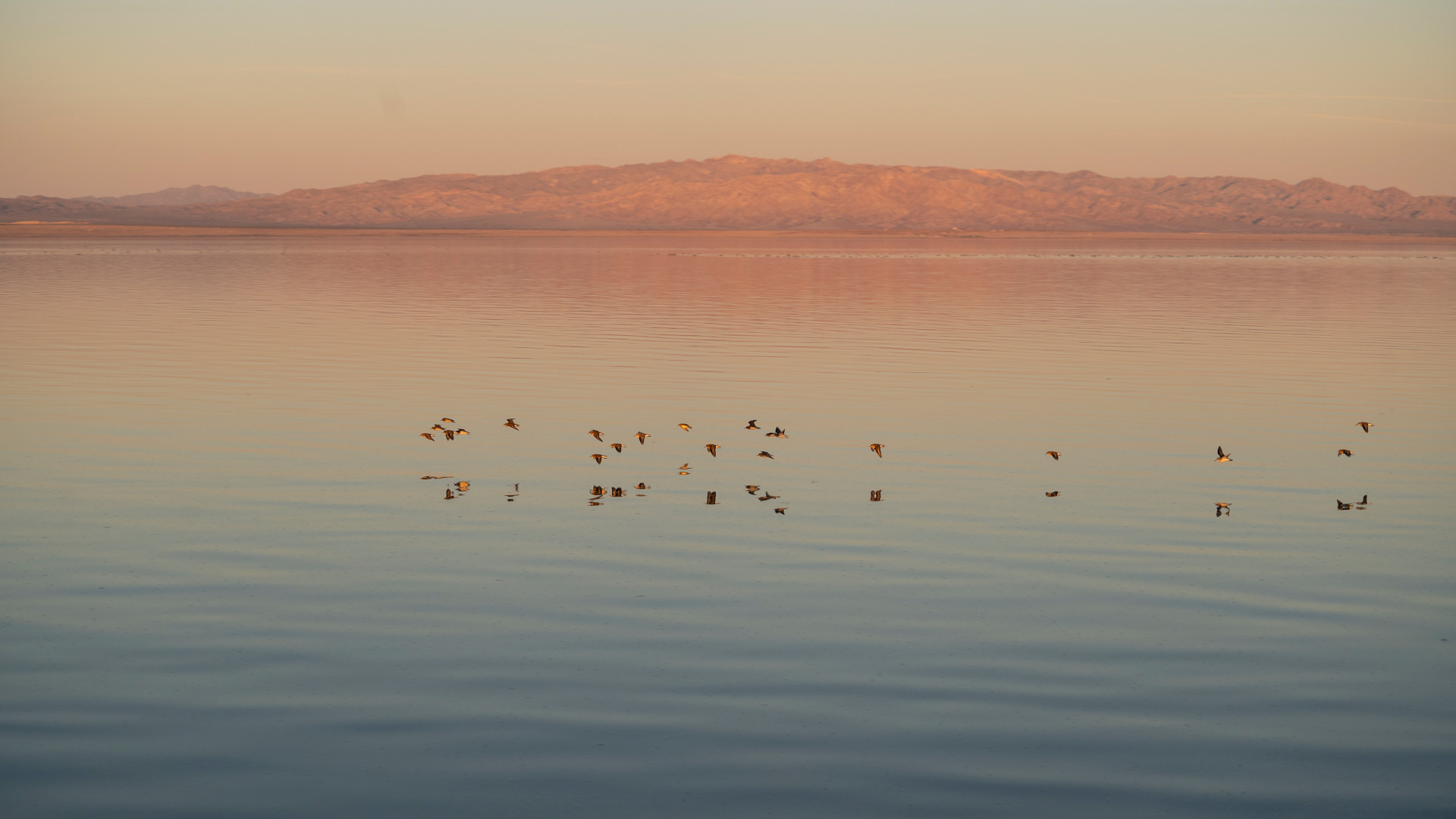
Wow unbelievable and no one will listen
Don’t worry there’s a Technology for that… I’m being very sarcastic now. Because that’s how it works, they destroy what is natural and then rely on Technology for the solution at cost to the people
So what?